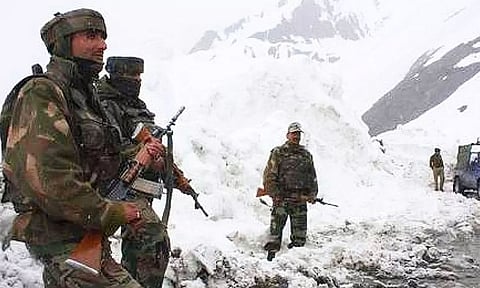
- Home
- Live Blog
- Breaking News
- Top Headlines
- Cities
- NE News
- Sentinel Media
- Sports
- Education
- Jobs

Guwahati: The Indian Government, 2 soldiers deployed in Ladakh, and families of martyred soldiers have confirmed that the Indian troops who were killed at the hands of their Chinese counterparts were unarmed and surrounded by a larger force on a steep ridge.
Some rather disturbing accounts have come to the fore which suggest that the Indian troops were brutally murdered by Chinese troopers with prehistoric weapons.
A soldier told the father of one of the troopers who was murdered that his throat was slit with metal nails in the darkness. Other jawans who died on that fateful day fell into the freezing waters of the Galwan river, some witnesses said.
Twenty Indian soldiers, all belonging to the 16th Bihar Regiment deployed in the Galwan region, died in a violent confrontation with the Chinese troopers that day. It was the biggest loss of life in combat between the neighbours since 1967, when war had broken out over border disputes.
Five families of martyred jawans produced death certificates that horrific injuries suffered during the six-hour night-time clash at 14,000 ft (4,267 metres.
Reuters spoke to relatives of 13 of the men who were killed, and in five cases they produced death certificates listing horrific injuries suffered during the six-hour night-time clash at 14,000 ft (4,267 metres) amid remote, barren mountains.
According to the death certificates, three of the dead men had their "arteries ruptured in the neck" and two sustained head injuries caused by "sharp or pointed objects" and there were visible marks on the neck and forehead.
A government official in New Delhi has said that the jawans fought with whatever they could get their hands on -- rods, sticks, and even with their bare hands India's government has claimed that the Chinese soldiers acted in a premeditated manner, but it has not provided a full account of the clash that led to the deaths of 20 of its jawans.
Meanwhile, a China foreign ministry spokesperson blamed the Indian side incursions into China by crossing the de facto border and "provoking" the Chinese soldiers stationed there.
He said that the Chinese officers and soldiers went there to negotiate and they were suddenly and violently attacked by the Indian troops, and he went on to add that the rights and wrongs of the incident are "very clear."
However, China is yet to give evidence of Indian aggression on the Chinese side of the border. The Chinese Government has also refuted India's claims that 40 soldiers from the PLA's western theatre command deployed in Galwan were killed in the clash, although an envoy to Delhi suggested that there had been losses on both sides.
According to Indian government officials, the skirmish when the commanding officer of the Bihar regiment led a small party to Patrol Point 14 to verify whether the Chinese had made withdrawn their troops from the site, as promised earlier. However, they were brutally attacked by PLA soldiers using iron rods and wooden clubs studded with nails on a narrow ledge.
Since this shocking incident, both the countries have deployed more forces along the border and the stand-off continues. Army officials believe more rounds of talks and negotiations are needed to de-escalate the situation.
These findings that indicate a smaller Indian force was overwhelmed in battle by a large Chinese force could fuel further resentment against China, as the anti-Chinese sentiment in India is already at an all-time high. Meanwhile, a relative of one of the soldiers who accompanied Colonel Santosh Babu, the commanding officer, says that the Indian army personnel were completely unarmed, making them easy pickings for the PLA contingent. An argument had reportedly ensued over the tents and a small observation tower the relative said, on the basis of conversations with two other soldiers who were present.
According to reports, the Indian jawans came attack from PLA soldiers who attacked them with crude weapons, families of three dead Indian soldiers who had conversations with survivors, revealed. Although some of the soldiers fled for safety on the ridgeline, they came out when they could not locate the commanding officer, and were subsequently beaten to death by the PLA soldiers. Babu was also martyred that day.
One of the soldiers deployed in the area told media that the Chinese side overwhelmed our people by sheer numbers. He said he also overheard radio messages seeking reinforcements being sent to regional headquarters in Ladakh.
Three of the Indian families said they had been told by soldiers who were commissioned to bring the bodies back to them that some combatants pushed each other into the fast-flowing Galwan river.